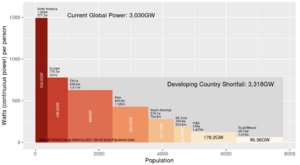imported>John Stephenson |
imported>John Stephenson |
| (102 intermediate revisions by 5 users not shown) |
| Line 1: |
Line 1: |
| == '''[[Higgs boson]]''' ==
| | {{:{{FeaturedArticleTitle}}}} |
| ----
| | <small> |
| The '''Higgs boson''' is a massive spin-0 [[elementary particle]] in the [[Standard Model]] of [[particle physics]] that plays a key role in explaining the mass of other elementary particles. The experimental discovery of a particle consistent with the Higgs was announced in a seminar on July 4, 2012.<ref name=Higgs>
| | ==Footnotes== |
| | |
| Announced at a CERN seminar in Geneva. See {{cite web |title=Higgs boson discovery brings scientists close to understanding mass |publisher=Washington Post |url=http://www.washingtonpost.com/business/higgs-boson-discovery-brings-scientists-lose-to-understanding-mass/2012/07/05/gJQA23iQPW_story.html |author=Thomas Mulier and Jason Gale |accessdate=2012-07-05 |quote=The data presented yesterday are the latest from the $10.5 billion [[Large Hadron Collider]], a 27-kilometer (17-mile) circumference particle accelerator buried on the border of France and Switzerland. CERN has 10,000 scientists working on the project...}}
| |
| | |
| </ref><ref name=CERN>
| |
| {{cite web |title=CERN experiments observe particle consistent with long-sought Higgs boson |date=4 July 2012 |publisher=CERN press office |accessdate=2012-07-05 |url=http://press.web.cern.ch/press/PressReleases/Releases2012/PR17.12E.html}} | |
| </ref> This particle was first proposed by Professor [[Peter Higgs]] of [[University of Edinburgh|Edinburgh University]] in 1964 as a means to explain the origin of the masses of the elementary particles by the introduction of an fundamental scalar field. This gives all the fundamental particles mass via a process of spontaneous symmetry breaking called the ''Higgs Mechanism''. The Higgs boson was popularised as the "God particle" by the [[Nobel Prize]]-winning [[physicist]] [[Leon M. Lederman]] in his 1993 popular science book ''The God Particle: If the Universe Is the Answer, What is the Question?'' co-written with science writer Dick Teresi.<ref>Leon M. Lederman and R Teresi (1993) ''The God Particle: If the Universe Is the Answer, What is the Question?'' Dell. ISBN 0-385-31211-3</ref><ref> [http://www.newscientist.com/article/dn16618-fermilab-closing-in-on-the-god-particle.html Fermilab 'closing in' on the God particle] ''New Scientist''</ref>
| |
| | |
| ===The Higgs Mechanism===
| |
| | |
| The Higgs Mechanism is vital in explaining the masses of the electroweak W and Z bosons. To understand the problem in giving mass to the vector bosons let us first consider the QED sector of the Standard Model Lagrangian.
| |
| | |
| ::<math>\mathcal{L}_{QED} = \overline{\psi}(i \gamma^\mu\partial_\mu - m)\psi - j^\mu_{em} A_\mu - \frac{1}{4} F_{\mu\nu}F^{\mu\nu}</math>
| |
| | |
| Now consider how things will change if we perform a local phase rotation such that:
| |
| | |
| ::<math>\psi(x) \rightarrow \psi'(x) = e^{i \alpha(x)} \psi(x)</math>
| |
| | |
| We would expect the Langrangian to remain invariant under such a rotation since to do otherwise would mean that if I chose a different phase than someone else where we could get different physics results.
| |
| | |
| | |
| ''[[Higgs boson|.... (read more)]]''
| |
| | |
| {| class="wikitable collapsible collapsed" style="width: 90%; float: center; margin: 0.5em 1em 0.8em 0px;"
| |
| |-
| |
| ! style="text-align: center;" | [[Higgs boson#References|notes]]
| |
| |-
| |
| |
| |
| {{reflist|2}} | | {{reflist|2}} |
| |}
| | </small> |
Latest revision as of 09:19, 11 September 2020
After decades of failure to slow the rising global consumption of coal, oil and gas,[1] many countries have proceeded as of 2024 to reconsider nuclear power in order to lower the demand for fossil fuels.[2] Wind and solar power alone, without large-scale storage for these intermittent sources, are unlikely to meet the world's needs for reliable energy.[3][4][5] See Figures 1 and 2 on the magnitude of the world energy challenge.
Nuclear power plants that use nuclear reactors to create electricity could provide the abundant, zero-carbon, dispatchable[6] energy needed for a low-carbon future, but not by simply building more of what we already have. New innovative designs for nuclear reactors are needed to avoid the problems of the past.

(CC) Image: Geoff Russell Fig.1 Electricity consumption may soon double, mostly from coal-fired power plants in the developing world.
[7] Issues Confronting the Nuclear Industry
New reactor designers have sought to address issues that have prevented the acceptance of nuclear power, including safety, waste management, weapons proliferation, and cost. This article will summarize the questions that have been raised and the criteria that have been established for evaluating these designs. Answers to these questions will be provided by the designers of these reactors in the articles on their designs. Further debate will be provided in the Discussion and the Debate Guide pages of those articles.
- ↑ Global Energy Growth by Our World In Data
- ↑ Countries, organizations, and public figures that have reconsidered their stance on nuclear power are listed on the External Links tab of this article.
- ↑ Pumped storage is currently the most economical way to store electricity, but it requires a large reservoir on a nearby hill or in an abandoned mine. Li-ion battery systems at $500 per KWh are not practical for utility-scale storage. See Energy Storage for a summary of other alternatives.
- ↑ Utilities that include wind and solar power in their grid must have non-intermittent generating capacity (typically fossil fuels) to handle maximum demand for several days. They can save on fuel, but the cost of the plant is the same with or without intermittent sources.
- ↑ Mark Jacobson believes that long-distance transmission lines can provide an alternative to costly storage. See the bibliography for more on this proposal and the critique by Christopher Clack.
- ↑ "Load following" is the term used by utilities, and is important when there is a lot of wind and solar on the grid. Some reactors are not able to do this.
- ↑ Fig.1.3 in Devanney "Why Nuclear Power has been a Flop"
